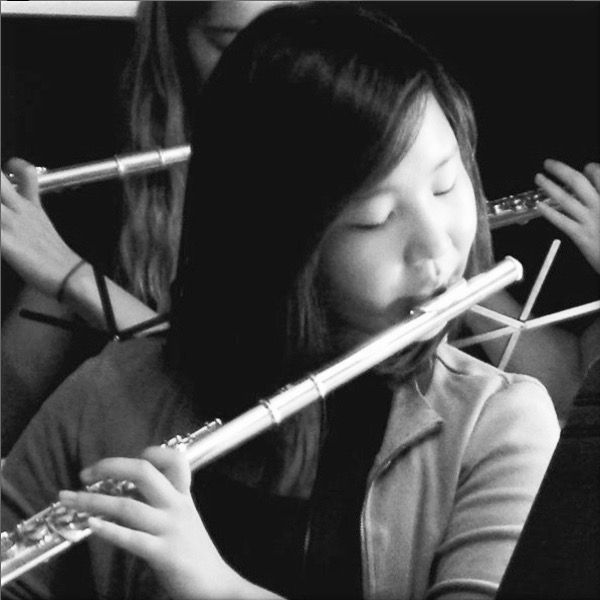Adding Tiny Students to the Studio
- Amy O'Neill

- Jan 29, 2020
- 4 min read
One of the best decisions I ever made was to start opening up my studio to younger kids. When I first started teaching, most of my students were beginning when they started band at school, which meant my youngest kids were 11-13 years old. It made me think - piano teachers and string teachers have kids starting before they get instrumental music at school - as young as 3 - what's keeping me from starting flutists that age?

So, I started exploring options. And when a Suzuki teacher in my (former) town had to shut down his studio, many of his younger students came to me - suddenly I had a whole day every week of 5- and 6-year-olds. It opened a whole new world of teaching - they did NOT think the same way that my 11-year-olds did!
Having these kids in my studio every week was a great incentive to work out creative new ways to teach, many of which spilled over into my lessons with my older kids. If you're interested in working with the young ones, here are some things I learned!
1. Parental involvement makes a huge difference.
I think the Suzuki teachers have it right here - if you can convince the parents to sit in on the lessons with their kids, those students tend to move much more quickly than if the parents are not involved. Not many 5-year-olds will practice on their own, so having the parents understand what you're working on in the lesson will help them at home. With the youngest ones, you really have two students - the child and the parent - and it's often the parents that need the most convincing.
Your youngster can still be successful if the parents aren't as involved, but they'll move more slowly and there will often be little to no practice between lessons. They will not be tackling Chaminade by the age of 5!
2. Finding instruments that fit.
The instrument that I assign to a tiny flutist depends on two factors - how big the student is, and how careful they are. I start all my under-8's on a nuvo TooT with the assisted lip plate to get them used to holding the instrument and giving them the ability to make sounds right away (just like on piano and violin!) and will gradually move them over to one of two smaller flute models when they show me they know how a flute should be treated (no putting feet on the flute. No throwing it across the room. No leaving it on the floor. No sitting on it. You get the idea).
I don't tend to bother much with the regular lip plate on the TooTs, as I find the regular flute's embouchure to be a bit more forgiving, and the kids are usually itching to switch to the "real" flute by this point anyway!
When they're ready (there is a list of "checkpoints" on the studio wall that we mark off as we complete them) I move them to either a curved/waveline headjoint d-foot flute for the tiniest ones (like the Jupiter JFL700UD (formerly known as the "Prodigy" or the d-foot model with the waveline head Jupiter JFL700WD). The bigger kids who aren't ready for a straight headjoint get a C-foot Jupiter or a Yamaha 200 series with a curved headjoint.
3. Finding an approach that fits.
In the last 20 years, I have worked with a huge variety of personalities, and have enjoyed the challenge of finding different ways to teach the skills they need to know in ways that work for their learning styles. Every kid is different, and at this age, if something doesn't work, you'll know it right away! (Yes, Mattie, I'm sure the train story is very interesting!)
Some little kids are quite methodical and like checklists. Others are scattered all over the place and you'll spend most of your creative energy trying to find ways that get them to focus long enough to complete the set task. Some love to work out of books and off worksheets, others would avoid holding a pencil or reading at all costs.
The great news is that there are resources out there to help you, so you don't have to start from scratch. Check out what we have available through the studio store - and let me know if there's a resource that you'd like to see added!
4. Keep them wanting to come back.
End your lessons with something fun. It can be a silly game or an iPad app (my students' favourite, hands-down, is FlashNote Derby). At this age, the majority of them aren't into duets at all ("I can do it myself!!") but love to put on performances or beat their teacher and parents at a theory game. If you can add a mini stage to your studio (even a curtain that they can make an entrance through can be a big hit) that's a great way to show off what you've worked on that week!
Do you have something that has changed your approach to teaching? Send me a message and tell me about it!
Happy teaching!



Comments